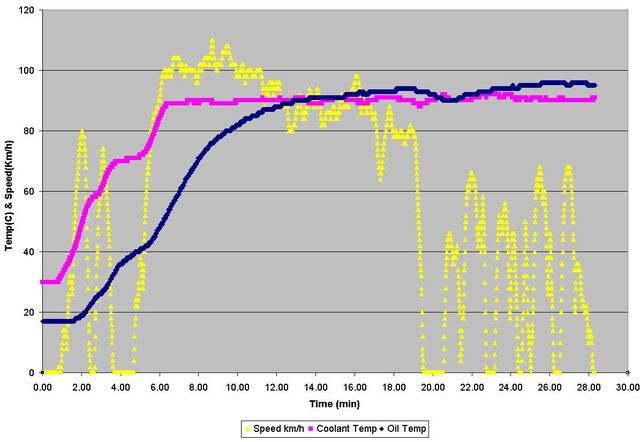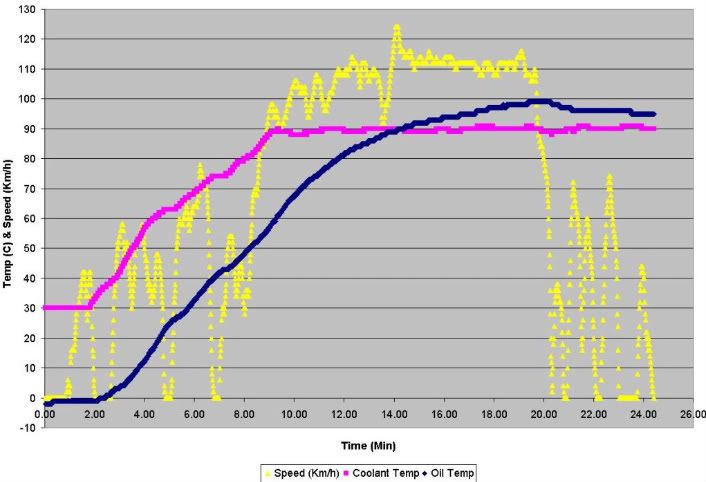- Joined
- Sep 28, 2002
- Messages
- 39,799
Originally Posted By: Steve S
Originally Posted By: Gary Allan
Quote:
I don't think over the road trucks are operated at near maximum loads. The good drivers even when going up hills gear for minimum load on the engine otherwise the turbos will get too hot.
Would you buy a tri-axle dump only to put 5yrds of dirt in it and tool around the countryside? Would you buy a Class 8 rig and only load it to 20k. Would you waste the money. How about a bulldozer or a loader ..and only use them to 10% capacity?
No, you wouldn't. We drive cars and ..by gosh ..even pickup trucks way below their sensible limits.
Please ..(sigh) ..oh, never mind.
Gary you are not really getting this post Since I have enough experience ,since I owned a semi for several years running coast to coast in these lower 48 states .I can with authority there is NO over the road truck and I would bet any aircraft that ever operates constantly at or near maximnm engine loads. Reread the original post. If interested My neighbor is an ex Marine fighter jock and now drives a commercial jet for a major airline about planes operation as it pertains to operating an maximum engine output.
My fine experienced friend... All of those conveniences have routine service capabilities that are fully assured to be tested when you buy the darn things. Tell me that, in your coast to coast distractions, you never encountered a 6-8% grade fully loaded? Tell me that that air craft never used FULL POWER at any time and that FULL POWER was what the given engine may have to encounter frequently and/or for sustained periods of time
It's the same for an industrial piece of equipment. The service is dictated by the things existence to begin with. The lubricant used is to allow it to work at MAX utility without undue refit time or failure in service UNDER THOSE CONDITIONS.
In your OTR sector, the lubricant happens to work out to 15w-40 in all things balanced to sensible economy.
Why not 50 weight? Why not 60 weight? 70? I mean ..if there's not terminal end to the theory/science, then why aren't they using those weights. They exist ..and they'll keep metal parts WAY further apart under all conditions.
The sword has to cut both ways.
This is too fundamental a concept. It's the same with your Euro-Alloy. They are designed for high speed sustained usage and are of higher power density.
Originally Posted By: Gary Allan
Quote:
I don't think over the road trucks are operated at near maximum loads. The good drivers even when going up hills gear for minimum load on the engine otherwise the turbos will get too hot.
Would you buy a tri-axle dump only to put 5yrds of dirt in it and tool around the countryside? Would you buy a Class 8 rig and only load it to 20k. Would you waste the money. How about a bulldozer or a loader ..and only use them to 10% capacity?
No, you wouldn't. We drive cars and ..by gosh ..even pickup trucks way below their sensible limits.
Please ..(sigh) ..oh, never mind.
Gary you are not really getting this post Since I have enough experience ,since I owned a semi for several years running coast to coast in these lower 48 states .I can with authority there is NO over the road truck and I would bet any aircraft that ever operates constantly at or near maximnm engine loads. Reread the original post. If interested My neighbor is an ex Marine fighter jock and now drives a commercial jet for a major airline about planes operation as it pertains to operating an maximum engine output.
My fine experienced friend... All of those conveniences have routine service capabilities that are fully assured to be tested when you buy the darn things. Tell me that, in your coast to coast distractions, you never encountered a 6-8% grade fully loaded? Tell me that that air craft never used FULL POWER at any time and that FULL POWER was what the given engine may have to encounter frequently and/or for sustained periods of time
It's the same for an industrial piece of equipment. The service is dictated by the things existence to begin with. The lubricant used is to allow it to work at MAX utility without undue refit time or failure in service UNDER THOSE CONDITIONS.
In your OTR sector, the lubricant happens to work out to 15w-40 in all things balanced to sensible economy.
Why not 50 weight? Why not 60 weight? 70? I mean ..if there's not terminal end to the theory/science, then why aren't they using those weights. They exist ..and they'll keep metal parts WAY further apart under all conditions.
The sword has to cut both ways.
This is too fundamental a concept. It's the same with your Euro-Alloy. They are designed for high speed sustained usage and are of higher power density.
Last edited:




